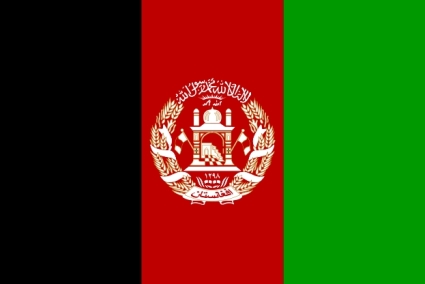The Flag of Afghanistan – Its Story
The Flag of Afghanistan, as it flies today, was officially adopted by the Afghan government in 2004. Interestingly, the current design of the flag looks very similar to the one that was flown in Afghanistan during the monarchy between 1930 and 1973.

The Flag of Afghanistan.
Starting in 1747, the Flag of Afghanistan underwent 24 changes. In the 20th century alone, the flag underwent 19 changes. Since 2000 the flag has been modified 3 more times.
Today, the Flag of Afghanistan consists of a vertical tricolor of black, red and green charged in the center of the flag the classical emblem of Afghanistan with a mosque with its “mihrab” facing Mecca. The vertical tricolor has been present on most flags of Afghanistan in the last 20 years.
The colors on the Flag of Afghanistan, black, red and green, are meant to represent different chapters in the nation’s history. The color black represents the 19th century, when a series of wars led to British occupation. The color red represents the nation’s fight for independence, and green is meant to show that independence has been achieved. Fascinatingly, these colors were also part of the Flag of Afghanistan from 1928 to 1978, running either vertically or horizontally. At that time, black represented the previous monochrome version of Afghan flags, which in turn represented the sovereign. Some have said that the color red was taken from the Soviet flag and meant to represent modernity and progress. The color green stood for Islam.
The classical emblem of Afghanistan in the center of the Flag of Afghanistan has the “shahadah” in the Arabic language at the top of the flag. As mentioned above, below the shahdah is the image of a mosque with a “mihrab” that is facing Mecca with a prayer mat on the inside. Attached to the mosque are two flags, taken to stand for flags of Afghanistan. Beneath the mosque is an inscription that states the name of the nation. Two flags are also attached to the mosque, which are taken to be flags of Afghanistan. Around the mosque is a “garland.”
